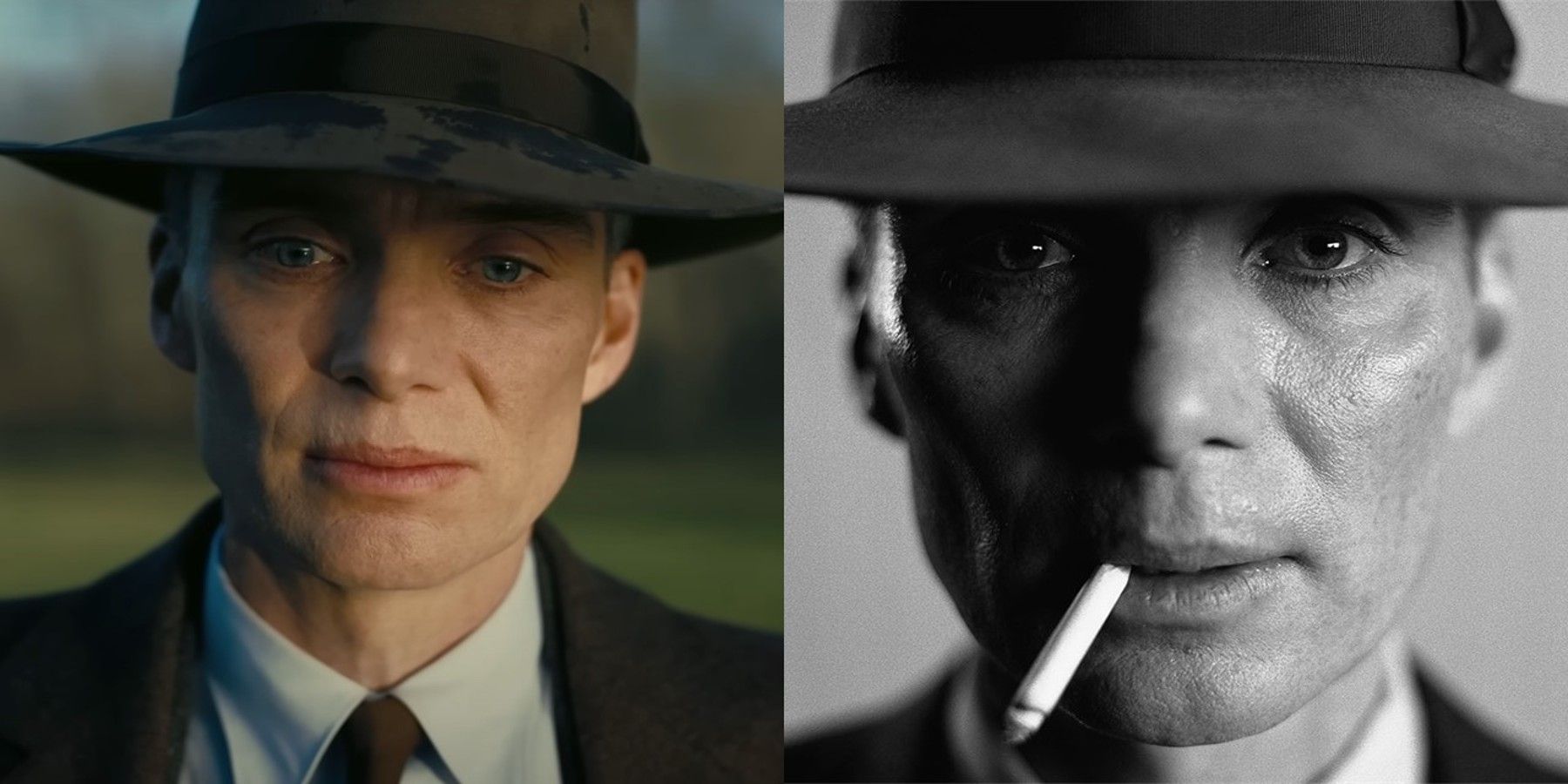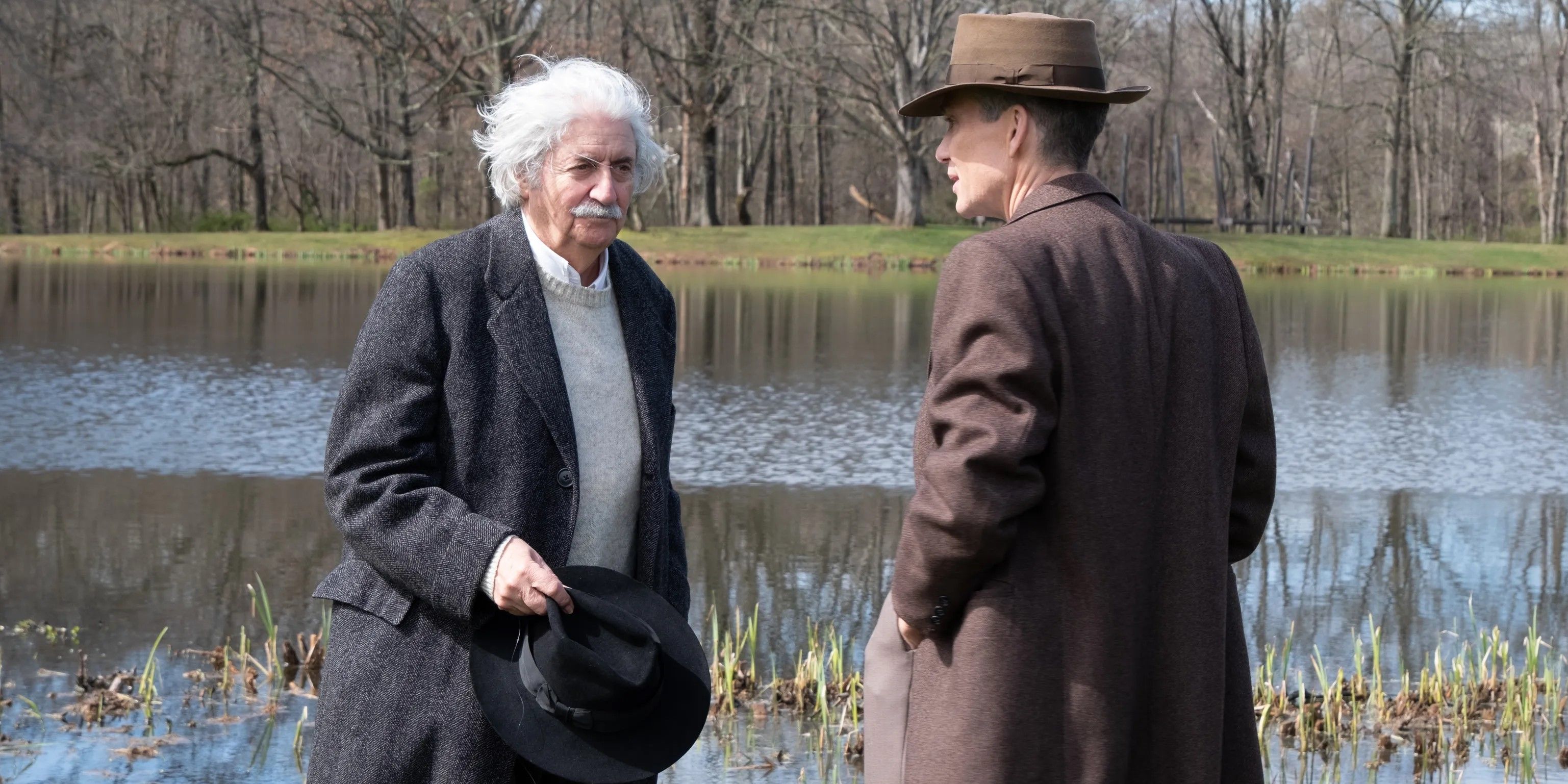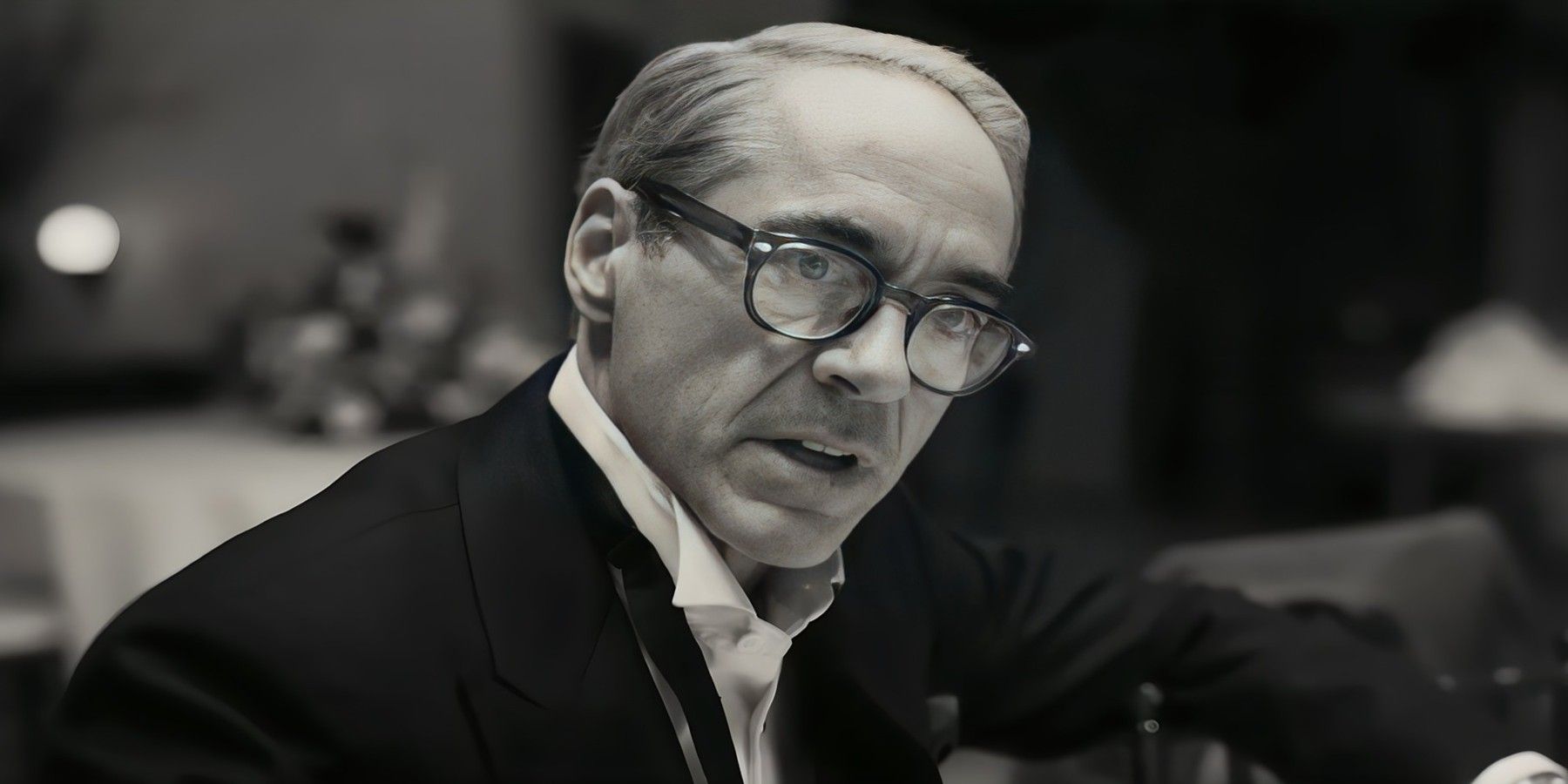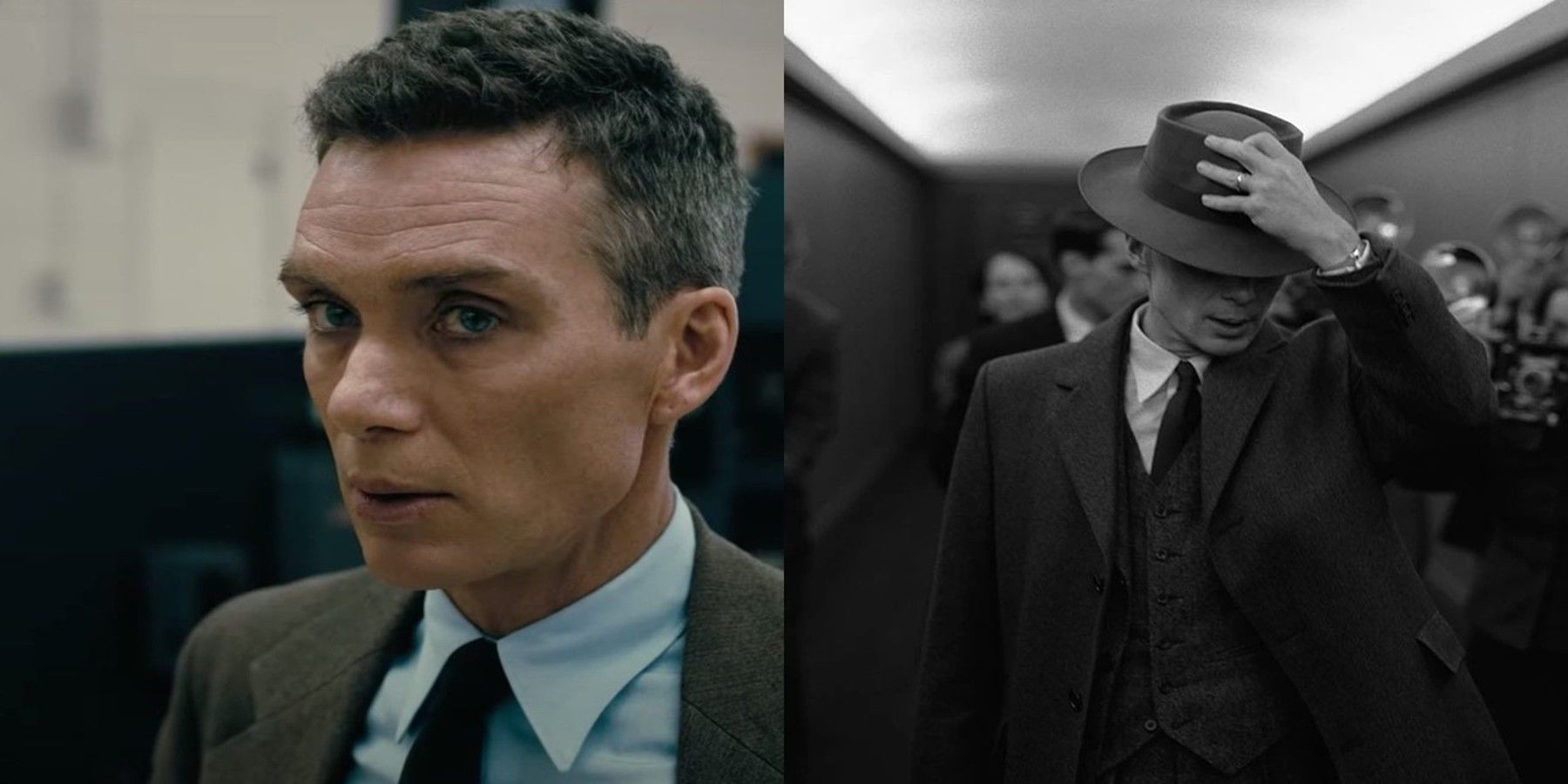Undoubtedly, Christopher Nolan’s Oppenheimer has become a worldwide success. The film has already broken multiple box office records, earning $180 million at the international box office in its opening weekend alone. After The Dark Knight, Oppenheimer has become Nolan’s second-biggest debut, and it is currently receiving an abundance of celebratory reviews. Oppenheimer documents the life of physicist J. Robert Oppenheimer, who is known for being the ‘father of the atomic bomb’. Cillian Murphy is currently receiving widespread acclaim for his portrayal of Oppenheimer, perfectly embodying the physicist’s complicated persona in his on-screen portrayal. However, Nolan’s latest creation cannot be defined simply as a biopic. Oppenheimer has defied audiences’ expectations, proving that Nolan has once again created a layered and intense piece of work.
Part of Oppenheimer’s depth comes from its color shifts. As audiences will know, some of the movie’s scenes are in color, whilst others are in black and white. Oppenheimer’s first hour switches between these colors at a rapid pace, becoming one of the most memorable elements of the entire movie. Although color changes in movies are commonly associated with time shifts, Christopher Nolan has defied audiences’ assumptions by providing a fascinating explanation behind Oppenheimer’s color changes.
What do the color scenes mean?
In an interview with Konbini, Nolan revealed that Oppenheimer’s split color palette represents “two strands to the movie”, explaining that the color shifts indicate differing perspectives. He went on to reveal that the color scenes indicate “Oppenheimer’s point of view”.
When the movie is in color, audiences are witnessing J. Robert Oppenheimer’s perspective. This means that Oppenheimer’s color scenes submerge viewers in the physicists’ complex psyche, as the events unfold from his personal perspective.
What do the black-and-white scenes mean?
In contrast, Oppenheimer’s black and white scenes convey the perspective of another significant figure - Lewis Strauss, who is played by Robert Downey Jr. In the same interview with Konbini, Nolan explained that the “black and white stuff is Robert Downey Jr., Lewis Strauss’ point of view”. Some viewers have even suggested that the black and white scenes are provocative of Strauss' own black and white mindset.
Why does Oppenheimer shift between colors?
Oppenheimer shifts between colors to demonstrate the film’s differing narratives, representing both objective and subjective perspectives. Although J. Robert Oppenheimer and Strauss are rivals, Oppenheimer’s color shifts tie their stories together.
The movie’s color scenes provide an excellent insight into J. Robert Oppenheimer’s mind– something that Christopher Nolan was desperate to convey. In an interview with Empire, Nolan stated that “One of the things that cinema has struggled with historically is the representation of intelligence or genius. It very often fails to engage people". This meant that adapting Oppenheimer’s psyche to the screen was Nolan’s focal objective for the movie – so much so that he even wrote the movie’s screenplay in first-person, commenting that he had never done anything like that before.
Nolan proceeds to recount his conversation with Oppenheimer’s visual effects supervisor, Andrew Jackson, telling him that: “We have to find a way into this guy’s head. We’ve gotta see the world the way he sees it, we’ve gotta see the atoms moving, we’ve gotta see the way he’s imagining waves of energy, the quantum world. And then we have to see how that translates into the Trinity test. And we have to feel the danger, feel the threat of all this somehow”.
Oppenheimer’s color shifts are a crucial part of unfolding J. Robert Oppenheimer’s psyche. During the movie’s color sequences, audiences are transported into Oppenheimer’s mind. In the same interview with Empire, Nolan revealed that the color sequences are the “bulk of the film”, meaning that “everything is told from Oppenheimer’s point of view — you’re literally kind of looking through his eyes”. However, the black-and-white interjections serve as striking reminders that this is a subjective perspective. By interweaving Strauss’ perspective into the movie, audiences receive a more layered insight into Robert J. Oppenheimer’s life.
Significantly, Oppenheimer’s time at Cambridge University is recounted through a colored perspective. In a memorable moment, audiences watch as Oppenheimer attempts to poison one of his University tutors by injecting cyanide into his apple. Following the film’s release, Oppenheimer’s grandson has spoken out about this crucial moment, dismissing it as fiction. In an interview with Time magazine, Oppenheimer’s grandson, Charles Oppenheimer, stated that: “There's no record of him trying to kill somebody. That's a really serious accusation and it's historical revision”.
Christopher Nolan based Oppenheimer’s screenplay on the novel American Prometheus – a biography of J. Robert Oppenheimer co-written by Kai Bird and Martin J. Sherwin. Whilst American Prometheus recounts the apple incident, it doubts the authenticity behind this tale. However, the biography does reveal that this was a story often told to others by Oppenheimer himself – something which the movie includes, as seen when Oppenheimer recounts this event to Jean Tatlock (Florence Pugh). This means that the color sequences are not indicative of historical accuracy, but instead embody Oppenheimer’s own personal perspective.
By incorporating the color shifts into Oppenheimer, Christopher Nolan successfully transports his audiences into Oppenheimer’s mind, but also reminds them that the story often arises from a subjective narrative.







